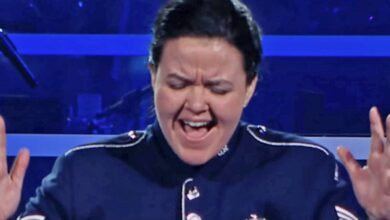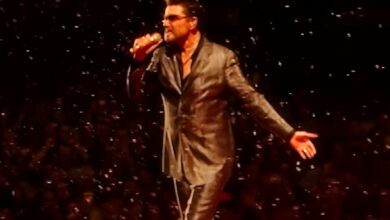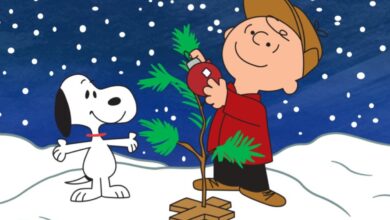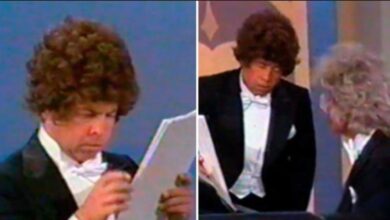Bobby Goldsboro’s “Honey” – The Tearjerking Ballad That Captured a Generation’s Heart
Among the emotionally charged music of the 1960s, few songs have left such a lasting impression as Bobby Goldsboro’s 1968 hit “Honey.” This sorrowful ballad recounts the tender memories of a man mourning the loss of his young wife. Its simple, heartfelt lyrics struck a powerful chord with audiences, solidifying the song as one of the most affecting and widely remembered recordings of the decade.
Born in Marianna, Florida, on January 18, 1941, Bobby Goldsboro began his musical path during his adolescence. A self-taught guitarist, he joined a number of local bands throughout high school before catching a life-changing opportunity—joining Roy Orbison’s backing band, The Webbs. Touring with Orbison provided Goldsboro with significant experience and exposure, ultimately preparing him to launch a solo career of his own.
Goldsboro’s solo journey officially began in 1964 with the release of “See the Funny Little Clown.” Written by Goldsboro himself, the song reached No. 9 on the Billboard charts, offering an early glimpse of his ability to tell emotionally rich stories through song. This early success laid the foundation for the breakthrough that would arrive four years later with “Honey.”
Although “Honey” was written by Bobby Russell—who initially recorded his own version—it was Goldsboro’s interpretation that truly gave the song its emotional resonance. He recorded the song in a single take on January 30, 1968, at RCA Studio B in Nashville. The stripped-down recording, free from elaborate production, allowed Goldsboro’s emotional delivery to take center stage, enhancing the song’s raw, heartbreaking sincerity.
“Honey” experienced immediate success upon its release. It reached No. 1 on the Billboard Hot 100 and stayed there for five weeks. Its appeal wasn’t limited to the U.S.; it soared to the top in Australia and climbed to No. 2 in the UK. By the end of 1968, “Honey” had become the highest-selling single globally, proving the universality of its themes of love and loss.
The lyrics of “Honey” unfold as a series of memories—a widower recalling tender and bittersweet moments with his late wife. From planting a tree to everyday quirks and laughter, the song captures the subtle but powerful significance of shared lives. Its emotional impact lies in its ability to paint vivid scenes that feel deeply personal yet universally understood.
Despite its widespread popularity, “Honey” also became a target for critics, who accused it of being excessively sentimental. Some labeled it melodramatic or saccharine. Nevertheless, the song’s emotional sincerity resonated with millions and has allowed it to endure, continuing to be a mainstay on nostalgic playlists and classic radio decades after its release.
“Honey” marked a turning point in Goldsboro’s career, bringing him to national prominence. The success of the song led to increased television appearances and eventually to his own variety show, *The Bobby Goldsboro Show*, which ran from 1973 to 1976. Following the success of “Honey,” Goldsboro continued to produce charting singles, including “Watching Scotty Grow” and “Summer (The First Time),” further solidifying his legacy in popular music.
Goldsboro’s creative pursuits extended far beyond music. He later made a name for himself in children’s television with the series *The Swamp Critters of Lost Lagoon*, in which he wrote, produced, and voiced characters. Additionally, he turned to visual arts, becoming a respected oil painter. His multi-faceted creativity showed that his talents were not confined to the music industry alone.
The emotional power of “Honey” led other artists to offer their own renditions of the song. O.C. Smith’s 1969 version reached No. 44 on the charts, while Andy Williams included a cover on one of his albums the same year. Each interpretation brought new life to the composition, demonstrating its flexibility and emotional depth across different vocal styles and arrangements.
“Honey” also spotlighted the songwriting brilliance of Bobby Russell. Known for other major hits like “Little Green Apples” and “The Night the Lights Went Out in Georgia,” Russell had a gift for crafting poignant stories set to music. With “Honey,” he managed to condense the pain and beauty of love and loss into a song that continues to evoke emotion even after decades.
The enduring significance of “Honey” lies in its masterful use of narrative and melody. The simplicity of the lyrics, paired with a soft, almost lullaby-like composition, allows listeners to immerse themselves in its story. The song transcends the time in which it was released, continuing to resonate with listeners experiencing grief or cherishing memories of loved ones.
As a ballad rooted in loss and remembrance, “Honey” helped shape a genre of emotionally driven songs that followed. Its success showed that audiences were not only open to—but deeply moved by—songs that spoke directly to the heart. It remains a reference point for musicians exploring themes of mortality, memory, and enduring affection.
Decades later, “Honey” stands as a cultural artifact from a time when songs carried stories meant to last. Its themes of love, death, and reflection continue to strike a chord with listeners of all ages. For many, it’s a deeply personal song—a musical companion in moments of mourning and memory.
Bobby Goldsboro’s rendition of “Honey” remains etched in music history not just because of its chart success, but because of its ability to reach into the human experience and hold it there in song. It’s more than a popular tune from a bygone era—it’s a timeless portrait of love’s fragility and the ache of letting go.





